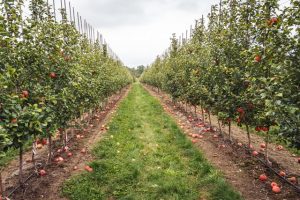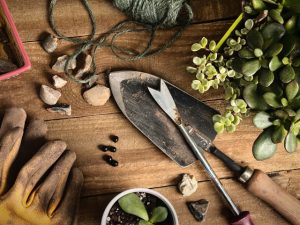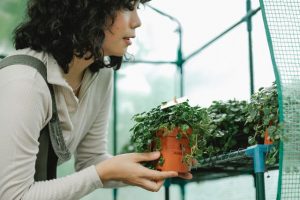Own an orchard can be really satisfying as it is lovely to pick and eat fruit you have grown yourself. However, fruit trees do require some care, and they do need protection from things like birds and storm damage.
While gardening is a source of relaxation for many, the fact remains that cleaning green spaces is an activity that must be done in the right way. These few tips will certainly help you keep your garden clean all year long.
Make an inventory of the orchard.
To properly clean your orchard, it is important to know every corner of it. This includes identifying shaded areas, areas exposed to wind, and areas with poor soil moisture. All these elements are essential to the development of plants that have specific needs. For example, some plants lose their leaves more often, while others attract moss and insects.
Removing what doesn’t belong in an orchard
To have a well-maintained garden, it is necessary to remove dead plants and leaves regularly. Weeds and brambles should also be removed, preferably by hand for accuracy, before they take root. Mulching can also be used to slow their growth.
Removal of inoculum sources, including diseased or dead tree tissue, infected branches, cankers, and rotten or mummified fruit, is an important control measure for summer rots, such as black rot and bitter rot.
Overwintering inoculum can be spread to new growth by rain, wind, insects, or contaminated material early in the next season and if conditions are right. Weather conditions cannot be influenced, but preventing the spread of pathogens to healthy trees and eliminating inoculum in the orchard from one season to the next can help reduce the amount of fungicide required the following year.
Pest control
Applying an insecticide is recommended in the case of a garden infected by aphids, flea beetles, slugs, weevils, and other beetles. When in doubt, the easiest way is to ask a professional for advice. The same advice is valid for pets. Indeed, cats and dogs sometimes relieve themselves near plants. Nothing is better than vinegar, lemon, and pepper to keep them away because the smell of these products is unbearable for them.
Pruning properly
Many plants need to be pruned to regenerate and regenerate. This is particularly true of hedges, vines, bushes, and fruit trees. At the end of winter or in early spring, it is necessary to remove dead or damaged branches and aerate the plant’s center. Sometimes it is useful to cut off the upper branches to make the flowers and fruits visible.
How to prune plants?
Back to school is the perfect time to prune plants in the orchard and vegetable garden. Harvest what has grown first and then prune the plants for new fruiting.
For hedges and borders, use shears to refresh shrubs and restore their shape. Use pruning shears to remove wilted flowers and leaves from beds. It would be best to cut off what has turned yellow but do not pull out your plants that can bloom again in the fall.
Be careful; before you start, check your tools! To ensure a clean cut and avoid the transmission of diseases, always use clean and sharp tools.
Choosing the right equipment
As in cooking, it is impossible to achieve good results in orchard cleaning without the right tools. This starts with the outfit, which must protect the body, hands, legs, and face. It is necessary to invest in a mower if your garden has grass. A shovel is also useful for turning over the soil and pulling out stubborn weeds. Again, asking an expert is the best option.
How to remove weeds?
Cleaning up your garden starts with removing the weeds that have taken over the land during your absence.
We advise you to use a hoe in the orchard because, as the saying goes, one hoeing is better than two waterings. Indeed, when it is dry and hot, do not hesitate to hoe your vegetables. 2 to 3 strokes of the hoe are enough to weed a garden without using pesticides. This will allow you to save water and eat naturally!
In safe areas, such as yards and walkways, use a thermal weeder. This will eliminate weeds quickly and easily. But be careful not to touch neighboring plants or flowers.
Finally, in the flower beds, operated by hand. With the help of garden gloves, you can remove all types of weeds without fear. However, for the toughest weeds, use a rake to remove them completely. Finish this cleaning by hoeing to aerate the soil and allow moisture to pass through.
Check plants for damage
When you buy your plants, it is a good idea first to check them for any damage. If you have them delivered, make sure they are exactly what you ordered. You would hate to get them in the ground and discover you have planted the wrong thing. Next, inspect the trees for any broken roots or branches. If there is any damage and it is not too severe, you can trim the roots and stems with a sharp pair of secateurs. Make sure any cuts you make are clean, as this lessens the chance of any disease.
How to treat the plants?
Treating the plants is the last step in the big clean-up of your orchard.
Indeed, when you return home, the stems of your roses or shrubs may be covered with aphids. These aphids cause serious damage, and it is often too late to treat the affected parts. It would help if you then treated the plants with black soap. This treatment must be done several times and always in the evening.
If spots have appeared on the leaves of the shrubs, it means that they are affected by a disease due to a parasitic fungus (oidium, rust, moniliasis,…). It is then necessary to treat the plants with an anti-disease treatment.
Professional Service
After cleaning your garden, there is often much debris that needs to be taken care of. However, finding a means to dispose of them can be hectic. Bargaindumpster.com is here to help with clearing all the debris from your orchard. Contact us now for more information.



